
From Pimp C to Marc Jacobs: Grunge, Thrifting and the Legacy of Nirvana tees
When I first got ‘into vintage’ a couple years ago, Nirvana tees ruled everything around me. They dominated the market. They ruled my algorithm. They were the object of desire of every vintage boy. The flex of the working class reseller.
And throughout the years, no matter what celeb wore a Nirvana tee, and no matter how many of these tees were adopted into the lexicon of hype fashion, these shirts continued to hold their prestige. Nothing could put a dent or take away from cultural weight and chic status of these 90’s t shirts.
To this very day, an iconic Nirvana tee from the 90’s will get you praise and fire emojis on your Instagram post. And it could fetch you anywhere from hundreds to thousands of dollars in the resale market. After all these years, it still is the mother vintage shirts.
But how did we get here? Let’s take a step back and see how these shirts became an icon of the underground vintage market and a staple of hype.
For the purposes length I’ll be focusing on what I consider to be the most iconic design of them all: Nirvana’s Sliver Tee.
On July, 1990 the then underground darlings of Nirvana stepped into the Reciprocal Recording studios during the lunch break of the Seattle band Tad. And on borrowed time (even going as far as literally borrowing Tad’s own instruments) they recorded their second single, ‘Sliver,’ in about an hour.
The cover for their second single is based on the anatomy kit known as “The Visible Man” invented in the 60s. The anatomy theme would persist all the way to the cover of Nirvana’s final studio album In Utero who’s cover was based on a postcard lead singer Kurt Cobain had which featured a see-through model of a woman (also known as the Transparent Anatomical Manikin) as detailed in the book “Nirvana’s In Utero” by Gillian G. Gaar. The credits of the album revealed the cover was photographed by Olympia-based photographer Michael Lavine and designed by Jane Higgins who created over 80 album cover for Sub Pop records, Nirvana’s then label.
Sliver (along with the track Dive) were released as a single under Sub Pop records on September 1st, 1990.
For this next section, I would like to thank Jonathan Christopher, also known as @Arcinthesky on Instagram, owner and curator for one of the most aesthetically pleasing pages I’ve ever seen on our corner of the internet: Cloakedinblack.com
You can also find it on Instagram as @cloaked.in.black
Without his help and guidance I would have been completely lost in the world of Nirvana t shirt lore. And I just really wanna thank him for his help…
One of the earliest utterances of the iconic Sliver tee came in the early 90s on a white tee.
The version you’ll most likely see passed around ourselves is the white Sliver tee circa 1990/1991 typically seen on the Oneita tag (which is a tag that Nirvana’s then label Sub Pop records often used for their merchandise). Available for purchase at Nirvana shows in the early 90’s, this graphic featured a front facing model of the human body different than the artwork used in the single cover but carrying over a similar color theme. The graphic channels the design and packaging aesthetics of the actual ‘Visible Man’ anatomy kit featuring phrases such as “An Exciting Dimensional Model of the Human Body” and others all written in Spanish. A reference to the slogans and descriptions written on the box of ‘The Visible Man’ anatomy kits.
The back hit of shirt just reads “SLIVER” in all caps in a gorgeous blue font similar to a popular 1798 font created by Italian printer Giambattista Bodoni. But my research revealed that Nirvana’s font of choice is most likely Onyx, a font cut in 1937 (and then later in 1955).
Nirvana chugged along in the Seattle underground music scene until 1991 when their song “Smells Like Teen Spirit” changed everything and catapulted the band into mainstream success. By 1992 the world had fully caught on to what was going on in cold, “crappy” and glamour neglected city of Seattle, Washington.
As detailed on the 1996 documentary “Hype!” (from which I’ll source heavily) the Northwest was known for flying saucers and being the serial killer capital of the world. The northwest was a place with bad weather where 80’s bands never bothered to visit during their tours. Only a handful (and I mean literally, maybe one hand) of Seattle clubs would have let you play your own music back then. Musicians back then rented out their own halls, performed and then clean up the rented space themselves afterwards. It was a place of mundanity and seclusion but the second rate city was also home to an intimate music scene where everyone played in a couple of bands and attended one another’s shows. The conditions of were ripe for something loud, pissed, angsty, self aware, cynical, and nihilistic to take shape.
The sound of grunge was born out of the punk and metal sounds that came before it as well as the local Seattle underground of the 1980s. And evolution of all these older influences with two feet planted on the late 80s and early 90s.
Aesthetically, one precursor to ‘the grunge look’ as we know it came in the form of street punks bumming it on University Avenue in Seattle. In the book “Grunge” by Michael Lavine (from which I’ll source heavily) you can get an incredible first person view of the types of styles in vogue during in the early 80s of the Seattle underground. Ripped jeans, busted ass Converse, ‘ugly’ mismatched and out of place garments from thrift stores, wrinkled button ups, studded leather jackets, plaid, band tees from Motörhead to Sid Vicious, and a lot of fucked up hair. That’s what you saw in the streets of Seattle. It was great.
But the look we associate today with grunge was quite a bit different from street punk glam of the 80s. The grunge look as we know it today is a sort of glorification of your own sloppiness and lameness and turning that into something chic and attractive.
Originally born out of a place full of lumberjacks and cold weather, the OG ‘grunge look’ was practical, comfortable, cheap, gritty and very “okay yea fuck you whatever. I don’t care that much.”
You wore layers to stay warm. Your rocked the flannel because they’re everywhere. You shopped second hand because you can afford it. Your shoes have holes because you fucked them up. You wear that band tee every day because that’s your favorite shirt. You tied that flannel around your waist because holding it in your arms all day is annoying. And you don’t give a fuck in the most sincere and practical way. It is what it is.
The gift that ‘the grunge look’ gave to Americans in the 90s was chic, trendy liberation from fashion norms. It was breath of much needed fresh air.
You can look like shit and it’s hot. You can be sloppy and it’s cool. You can wear a cardigans full of bullet sized holes and there’s a sort of danger to it. You can fuck up your makeup and it’s really attractive. Everyone can be a little Kurt, everyone can be a little Courtney.
And with this came with a bit of a mainstreaming of thrifting. All of the sudden it’s not only okay to shop at Goodwill and raid your grandparents closet but it’s actually kinda cool and trendy to do so. It reminds me a bit of how today, the resellers and hypebeasts of Instagram are blamed for mainstreaming of thrifting to Gen Z and kids who do Tik Tok thrifting hauls. Maybe. Perhaps we did that.
But grunge explosion did that back when most of us hadn’t even been born. They walked a mile in hand me downs so that we could run in our a Chicago Bulls Starter jacket and a Smashing Pumpkin tees. A bit of a passing of the torch.
But back to the appeal of grunge style:
It was a hybrid of low effort sloppiness and every day glamour, everyone wanted a piece of it after Nirvana’s “Smell Like Teen Spirit” turned the world onto what whats been happening in the streets of Seattle.
Musicians Kurt Cobain and Courtney Love being the absolute epitome (and most beloved examples) of what grunge looks, sounds and smells like. Kids watching MTV were absorbing the vibes and wanting the look. And fashion brands high and low were taking notes on what was then thought of as the new hot trend.
One of the most notorious examples of high fashion taking notes was Marc Jacob’s runway show on November 3, 1992. Dubbed as the Marc Jacob’s ‘Grunge Collection’ for Perry Ellis which he was the head of women’s design, the show made references to grunge style in sorta abstract way but did incorporated a few touches of it on the runway. In a sort of sanitized, high fashion manner of course. That being the makeup, Dr Martens, beanies, the garment clashing, graphic tees and so on. But Jacob’s collection did have a sort of edge to it that absolutely polarized his high fashion audience at the time.
Now I quote Marc Jacobs on Episode 2 of the podcast “In Vogue: The 1990s” (from which I will quote heavily):
“But what I was really feeling was the rock and roll circus. And I had to get back to sort of doing something that I believed in. And what I believed Perry Ellis would have been doing if you were a young person. So I kinda returned to the club scene and my friends who were young and making music and art”
Grunge was going mainstream. It was going through that beautiful metamorphosis that all immortal staples of culture go through where: culture is bred and nurtured in the underground’s of the world. And then for, a moment, it kinda finds and gently taps the shoulder of a new audience who spread it around even further. Only to finally penetrate into the mainstream and become part of the cultural zeitgeist of the time. And only the most immortal of contributions get to live on as the wonderful background noise that we take for granted for decades to come.
After the success of “Smell Like Teen Spirit” Seattle was on the map. Seattle bands were getting signed left and right. The city become more than just the place where Nirvana got popular. Seattle was almost a brand you could slap on something or a prehistoric meme you’d spread around. Areas of that city that were once crappy shacks were now beautiful homes.
Investment, development and attention.
Now quoting Eddie Vedder of Pearl Jam in the 1996 documentary “Hype!”:
“That’s probably why you created in the first place. Because of the freedom. Do whatever you want. You can do whatever you want on tape. But again, commerce is involved. And as soon as it’s starts going through those channels, those money making channels, everything changes”
In 1992 is when we saw the production of what would become THE Sliver tee that we see on our Instagram Vintage newsfeed at least 3 times per week.
The black variant of the Sliver tee is most commonly see on Giant’s Tee Jays and Tultex tags (again, thank you to @ArcInTheSky and @cloaked.in.black for helping me out with all the tag lore and being a walking encyclopedia of shirt nerd knowledge).
The shirt can be seen on the legendary 1992 Vogue shoot titled “Grunge and Glory.” Giving the grunge look another stamp of approval from the high fashion la la lands looking in at youth culture.
My favorite example of the ‘92 Sliver tee in pop culture being of course Pimp C of UGK rocking said grail on the video “Use Me Up” from their 1992 album “Too Hard to Swallow”
Pimp C perhaps unintentionally pioneering a style where we mix hype band tees, grail snapbacks and sportswear all together. Early 90s colorful style meets absolute comfort. A sort of male chic-ness that vintage boys from Rose Bowl to Brrrtual still adhere to to this very day.
Fun Fact: Pimp C also rocked the Nirvana Sliver tee on the video for the song “Something Good.” But nobody talks about this.
The design was reprinted in the early 2000s but now on the blue anvil tag (yea, that’s right boys. Hate to break it to you but that tee on eBay you were just looking at is probably from 2002 and not 1992).
Today video Nirvana tees have become a sort of untaintable garment that never loses its cool factor, no matter how many times you see smiley face logo tee for sale at your local Target t-shirt wall.
From celebs like Kanye West, Travis Scott, and Justin Bieber to our favorite t shirt resellers on Instagram, have all kinda helped give Nirvana tees a third chance at life going from timely band merch for a popular band to reprinted band merch of a legendary band that’s now gone to being the absolute peak of hype t shirts.
Nirvana tees have a sort of ethereal appeal to them. When you see them, you kinda bow your head in respect because that guy is one of the lucky dudes who could afford to drop a couple hundred on the most chic and desired band tees of all. Even I, who was never a huge ‘Nirvana girl’ and had little interest in being part of the Nirvana hype cycles of today, kinda want a Sliver tee after doing this much research into it.
Again, it’s that eternal coolness that the Sliver tee has. It’s the oversized pink and blues on the ‘Giant’ blank. It’s the photography of Michael Lavine and the design of Jane Higgins. It’s the onyx font that was ode to a classic 1700s font. It’s the cultural weight of Kurt Cobain and his status as a larger than life personality which you can wear on your chest. And for people who care about exclusivity and status, it’s the fact that “most people can’t have this. But I fucking have it! Hell yeah”
But the legacy of Nirvana doesn’t stop at the resale market. I want to end this essay with some quotes from the podcast “In Vogue: The 1990s” that really illustrated different takes on hype, culture and legacy. And I just want you kinda sit in this information and think about it for a while.
Hamish Bowles editor at large for Vogue:
“Now that grunge was in the pages of Vogue, now that it was something that could be purchased and styled, it became commodified and commercialized. Something that the originators of grunge never sought and in fact actively rejected. And while you could still find flannel shirts in the Salvation Army, you could also buy designer versions which may cost less than couture but we’re still high fashion designers prices”
Megan Jasper of Sub Pop Records:
“When grunge hit the runways, first off it seemed bizarre that people were willing to pay that kind of money for something that anyone else here would’ve spent like five dollars for at a thrift store. I remember thinking like: ‘You kinda have to hate your money buy that’…. It’s actually a really interesting thing because it means that this culture is speaking to a lot of people and it means that things are probably opening up. But also, when you’re early 20s you don’t wanna fucking share that shit, like, you kinda wanna own it for yourself. I wasn’t ready to share all of it then. But I mean, what do you do? It’s not like it’s something to fight against. Because, it’s happening.”
Cathy Horyn:
“Why were those of us in attendance [to Marc Jacob’s 1992 runway show] such a miserable chorus of condemners? Why did so many critics allow no room on the America runways for a look that was legitimately an expression of impertinent new values. About alternative beauty, unaffected glamor, anti luxury”
Hamish Bowles editor at large for Vogue:
“And grunge has never really left the fashion stratosphere. In recent seasons both Marc Jacobs and Anna Sui reissued those iconic collections. And when you look at the clothes now, they don’t seem radical. They don’t seem like a massive departure. In fact they seem quite normal and cool and comfortable. Because they established an eclectic vintage-driven way of dressing that has continued to shape the 21st century fashion landscape”
Special thanks to @thriftintarantino for writing this article. Check out some vintage Nirvana tees available on BIDSTITCH.COM below






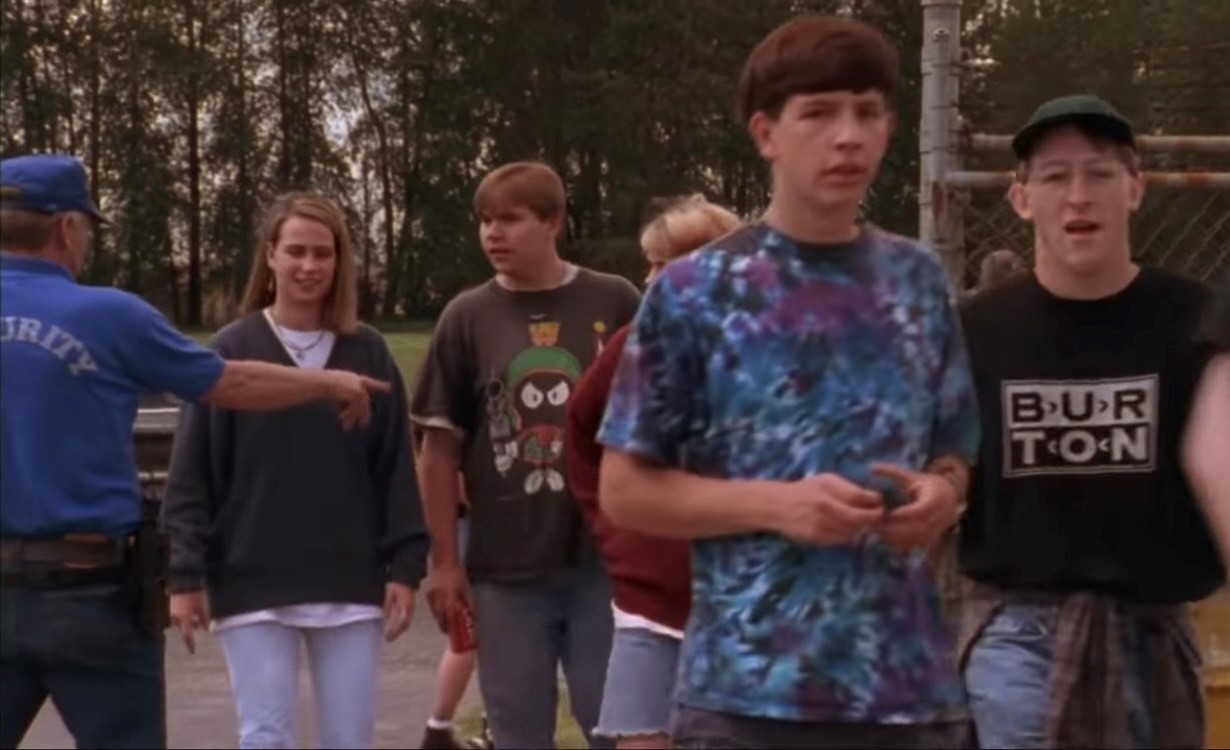



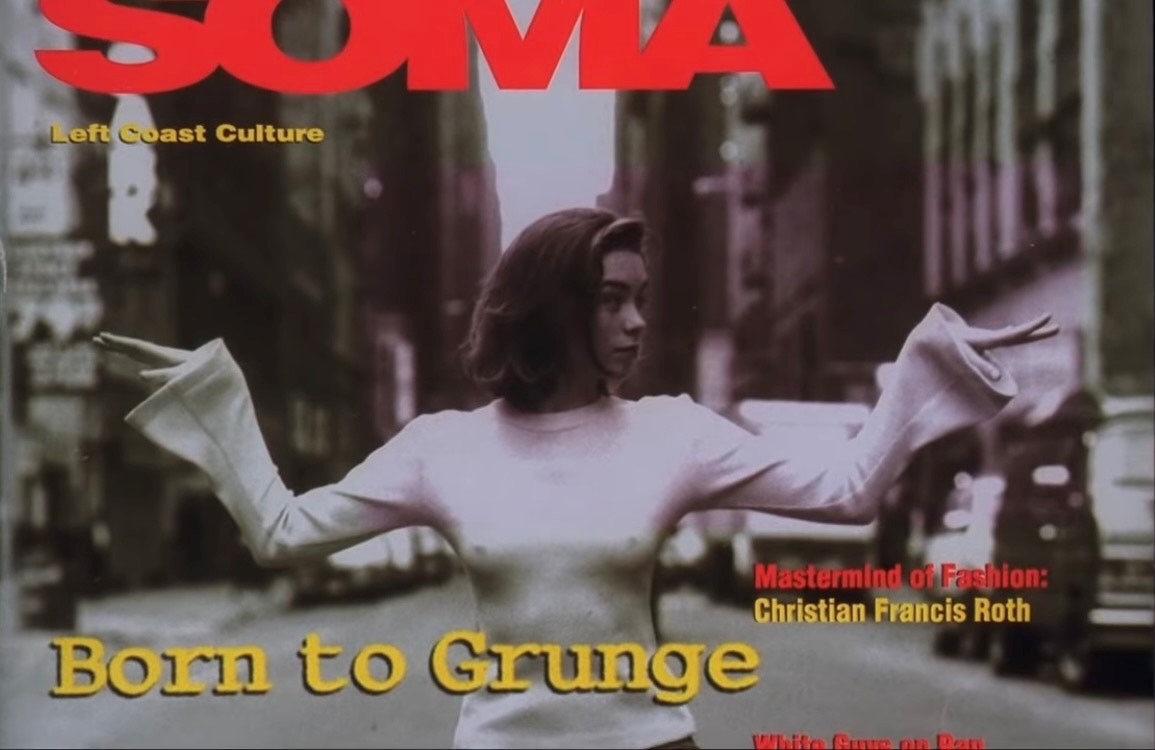

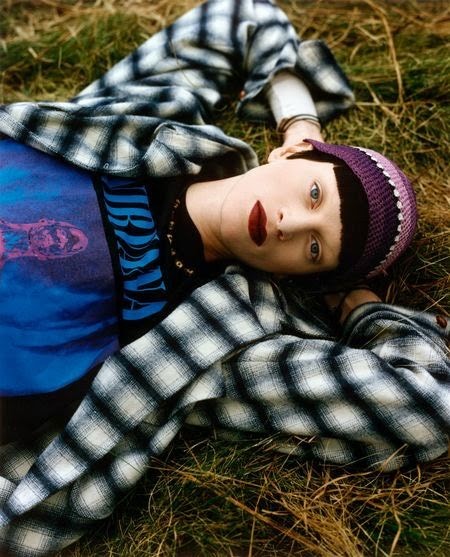
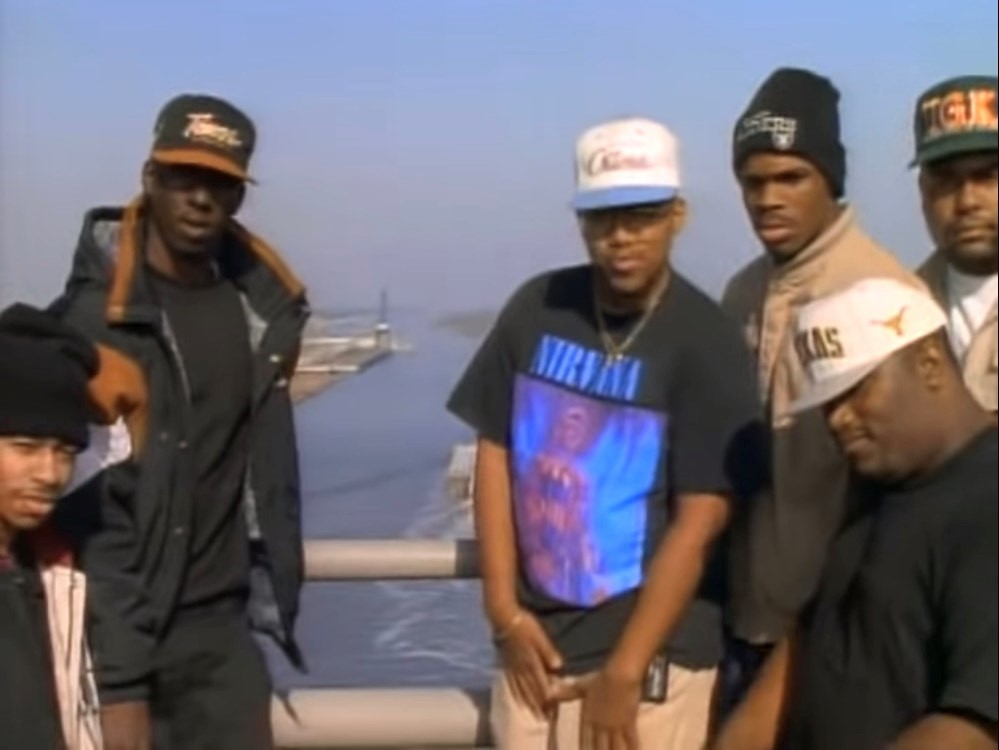
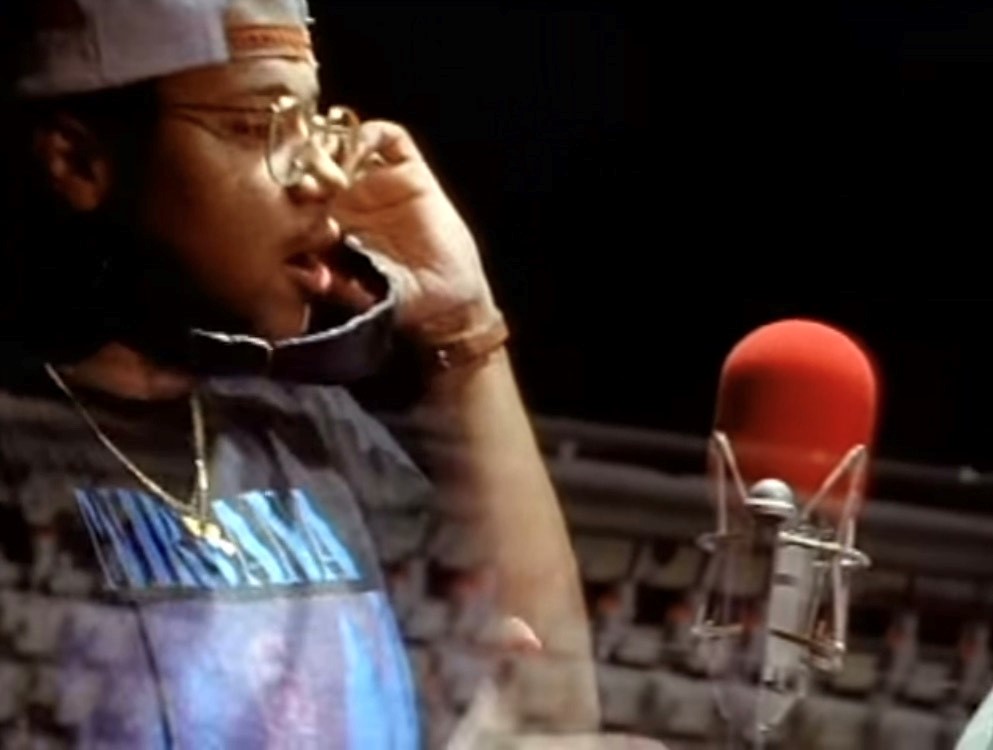



Discussion